
KEYNOTE SPEAKERS
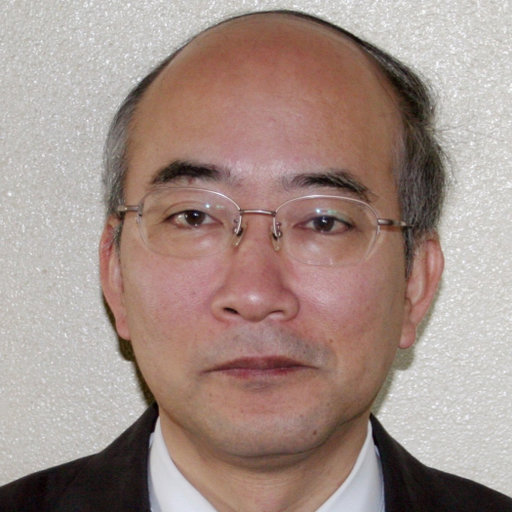
Professor Takeshi Mizuno
Saitama University, Japan
Speech Title: Control Issues in Active Magnetic Suspension Technology
Abstract:The noncontact suspension of an object is still fascinating people. A typical method of achieving such
suspension is magnetic suspension in which the object (floator) is kept in air by magnetic force. There
is no contact between stator and floator. No mechanical friction and wear are expected during
operation even without lubrication. These advantages have already given rise to many industrial
applications such as Maglev systems for transportation, and magnetic bearings for the suspension of
rotating object (rotor).
Among various methods of magnetic suspension, active electromagnetic suspension is most widely
used in industrial applications. In this technology, active control plays a critical role mainly because
this type of magnetic suspension system is inherently unstable.
In this speech, several approaches of control are introduced. First, an overview of technological
fundamentals is explained. Then, the pioneer and/or recent works of the author are presented.
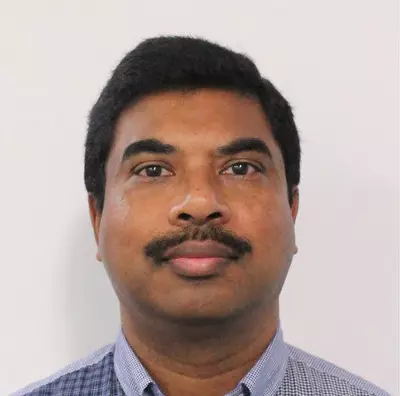
Professor Firoz Alam
School of Engineering
RMIT University, Australia
Bio: Dr. Firoz Alam is a Professor in the School of Engineering (Aerospace, Mechanical and Manufacturing) at RMIT University in Melbourne, Australia. He completed his PhD in vehicle aerodynamics from the same university in 2000. He received his Master’s degree (combined with Bachelors) in Aeronautical Engineering with Honours (First Class First) from Riga Civil Aviation Engineers Institute, former Soviet Republic of Latvia in 1991. Prof Alam’s research interest includes thermal fluid mechanics, aerodynamics of aircraft, road vehicle, train, building, sports, energy, engineering education curriculum design, quality assurance and accreditation. He has over 300 publications (including scholarly books, book chapters, journal articles and peer reviewed conference papers). He is currently serving as editor in chief and editorial board member for over half a dozen international scientific journals. Prof Alam is a Fellow of the Institution of Engineers Australia, Chartered Professional Engineer (CPEng), and APEC Engineer. He is an active member of several other professional societies and associations including American Society of Mechanical Engineers (ASME), American Institute of Aeronautics and Astronautics (AIAA), Society of Automotive Engineers USA & Australia, and International Society of Bionic Engineering. Prof Alam received RMIT University’s best Teacher Award in 2004.
Speech Title: The Developing South Asia in view of Global Energy Crunch
Abstract: The economic prosperity and energy security for South Asia’s 1.9 billion people are in severe jeopardy due to the global energy crisis created by the western sanctions on Russia’s energy resources export to the world market. The economic setback has been intensified further by the aftermath of COVID-19 pandemic, skyrocketing global energy price, high-inflation, and national currency devaluation. All energy importing developing nations including South Asian energy deficient Bangladesh, India, Pakistan, and Sri Lanka have been forced to pause energy import, causing unprecedented energy shortages for power generation, industrial and fertiliser outputs, and other economic and commercial activities. The country-wide power blackout and power rationing have caused unceremonious impact on all aspects of economic, social, education, health, and cultural life. This paper highlights the impact of the energy crisis in developing nations with reference to South Asia, the home of 215 million extreme poor people who live below the poverty line (2.15 US dollar per person per day). The paper also emphasises on the needs for enhanced energy security and optimal utilisation of indigenous energy resources.
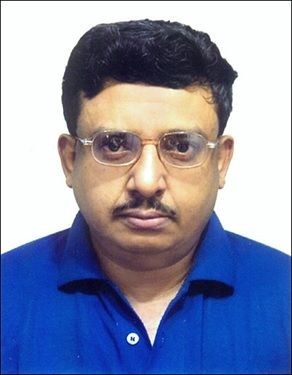
Professor Somnath Chattopadhyaya
Indian Institute of Technology (IIT), India
Speech Title: Critical Investigation on Alloy Stainless Steel Bi Metallic Joining Using Friction Stir Welding For Aerospace Application
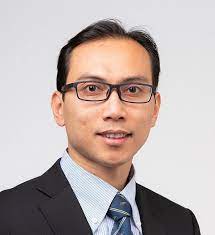
Professor Muhammad Aziz
University of Tokyo, Japan
Bio: Dr. Aziz is currently an Associate Professor at Institute of Industrial Science, The University of Tokyo, Tokyo, Japan. He received B. Eng., M. Eng., and D. Eng. degrees from Kyushu University, Japan, in 2004, 2006 and 2008, respectively, in the field of mechanical engineering. He was the President of International Indonesian Scholars Association (Ikatan Ilmuwan Indonesia International) during the period of 2020-2022. His general research areas are advanced energy conversion systems. His research interest includes power generation, renewable energy utilization, process modeling, smart grid, electric vehicle, battery, and hydrogen production and utilization. He has published more than 170 peer-reviewed journals, 25 books and book chapters, and numerous conference proceedings, with Google Scholar and Scopus h- indexes of 38 and 34, respectively. He is also listed in the top 2% World Scientist issued by Stanford University (2020) and Mendeley (2021). He has received several awards including Young Researcher Award from Asian Pacific Confederation of Chemical Engineering Congress in 2012, Outstanding paper award from Journal of Chemical Engineering of Japan in 2013, Japan Institute of Energy Award for Encouragement from Japan Institute of Energy in 2016, The Best Paper Award from Japan Society of Energy and Resources in 2018, and UTokyo Young Excellent Researcher 2018 in 2019.
Speech Title: Future Perspective of Carbon-Free Hydrogen/Ammonia in Energy System
Abstract: The utilization of carbon-based fuels has led to the massive emission of greenhouse gases, especially CO2, to the atmosphere. Furthermore, energy security, energy equity, and environmental sustainability are the important pillars toward the realization of sustainability in energy system. In order to strengthen these pillars and solve the environmental problems, clean and renewable energy sources have been gradually deployed, along with the adoption of carbon- free secondary energy sources. As non-carbon based chemical and secondary energy source, hydrogen is believed to play important roles in the future energy system due to its excellent characteristics of high conversion efficiency, cleanliness, and technological advancements. However, currently hydrogen faces several challenges, especially related to its storage/transportation and economic performance. Several promising hydrogen storage technologies are analyzed and compared, including liquid hydrogen, ammonia, and liquid hydride. Ammonia is considered promising option for hydrogen storage due to its higher total energy efficiency, infrastructure readiness, and economic performance. Furthermore, in order to improve the overall economic performance of hydrogen, a scenario to facilitate its possible massive utilization in the existing energy systems must be provided. Hence, hydrogen can have broader options, including as raw fuel for base-load power generation, chemical fuels, and adjusting/balancing services.

Dr. Muhammad Mustafizur Rahman
Wichita State University, USA
Bio: Dr. Muhammad Mustafizur Rahman earned the Bachelor of Science in Mechanical Engineering degree from Bangladesh University of Engineering and Technology in Dhaka, Bangladesh in 1980; the Master of Science degree from University of Manitoba in Winnipeg, Manitoba, Canada in 1983; and PhD from University of California, Berkeley in 1988. He moved to Wichita State University (WSU) in August 2014 as the Bloomfield Endowed Chair in Engineering and Professor of Mechanical Engineering after serving as a faculty member in the Department of Mechanical Engineering at the University of South Florida (USF) for 21 years. His research has been funded by NASA, US Department of Energy, US Department of Defense, and industries in USA and Europe. Dr. Rahman served as the Chair of the Advanced Energy Systems Division of American Society of Mechanical Engineers (ASME). He also served as an Associate Technical Editor of the Journal of Solar Energy Engineering and the Journal of Energy Resources Technology. He was a member of the Editorial Board in the International Journal of Energy Research and currently a member of the Editorial Board in MIST International Journal of Science and Technology. Dr. Rahman received the USF Outstanding Teaching Award, SAE (Society for Automotive Engineers) Teeter Educational Award, ASME Florida West Coast Engineer of the Year Award, ASME Dedicated Service Award, and WSU Faculty/Staff Fundraising Award. He is an ASME Fellow since 2007. He is a Mechanical Engineering program evaluator in the Engineering Accreditation Commission of ABET (Accreditation Board for Engineering and Technology) and a Peer Corps Member in the Higher Learning Commission for regional accreditation of educational institutions.
Speech Title: Review of Recent Advances in Hydrogen Storage Technology
Abstract: Development of the most cost effective, lightweight, and efficient technology for the storage of hydrogen for possible transportation applications is essential for the transition from a fossil fuel-based economy to a renewable and sustainable economy. Hydrogen is the crucial element for addressing the world’s environmental concerns and for securing a long-term energy future. Over the last three decades, extensive studies have been conducted on the development of compressed gas, cryogenic liquid, and solid-state hydrogen storage technologies. This study in intended to cover the state-of-art of these routes and challenges that we need to address to bring these technologies from laboratory to commercial marketplace. Among the various solid- state hydrogen storage materials, metal hydrides are known as an efficient, high- density hydrogen storage material that meets storage demand. We plan to discuss the advances in a solid-state hydrogen storage system using different kinds of novel materials and their limitations and emerging trends to design better storage materials. Moreover, the integration of nanomaterials in the metal hydride, their operation with fuel cells, and their use as thermal storage will be discussed. The nanoscale tailoring of metal hydrides with carbon materials is a promising strategy for the next generation of solid-state hydrogen storage systems for different industries.
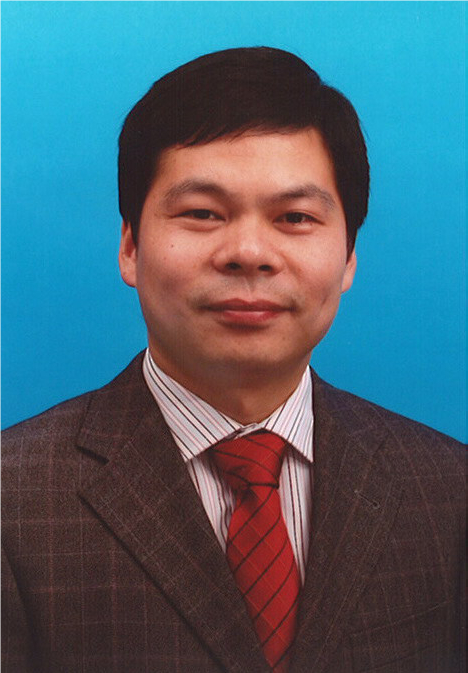
Professor Xingjian Jing
Department of Mechanical Engineering
City University of Hong Kong, Hong Kong
Bio: Xingjian Jing(M’13, SM’17) received the B.S. degree from Zhejiang University, China, the M.S. degree and PhD degree in Robotics from Shenyang Institute of Automation, Chinese Academy of Sciences, respectively. He also achieved the PhD degree in nonlinear systems and signal processing from University of Sheffield, U.K., in 2008. He is now a Professor with the Department of Mechanical Engineering, City University of Hong Kong. Before joining in CityU, he was a Research Fellow with the Institute of Sound and Vibration Research, University of Southampton, followed by assistant professor and associate professor with Hong Kong Polytechnic University. His current research interests include: Nonlinear dynamics, Vibration, Control and Robotics, with a series of 200+ publications of 8000+ citations and H-index 47 (in Google Scholar), with a number of patents filed in China and US.
Speech Title: The X-Structure/Mechanism Approach to Beneficial Nonlinear Design in Engineering
Abstract: Nonlinearity can take an important and critical role in engineering systems and thus cannot be simply ignored in structural design, dynamic response analysis, and parameter selection. A key issue is how to analyze and design potential nonlinearities introduced to or inherent in a system of under study. This is a must-do task in many practical applications involving vibration control, energy harvesting, sensor systems and robots etc. This paper presents an up-to-date review on a cutting-edge method for nonlinearity manipulation and employment developed in recent several years, named as the X-shaped structure or mechanism approach. The method is inspired from animal leg/limb skeletons and can provide passive low-cost high-efficiency adjustable and beneficial nonlinear stiffness (high static & ultra-low dynamic), nonlinear damping (dependent on resonant frequency and vibration excitation amplitude) and nonlinear inertia (low static & high dynamic) individually or simultaneously. The X-shaped structure or mechanism is a generic structure or mechanism representing a class of beneficial geometric nonlinearity with realizable and flexible linkage mechanism or structural design of different variants or forms (quadrilateral, diamond, polygon, K/Z/S/V-shape, or others) which all share similar geometric nonlinearity and thus similar nonlinear stiffness/damping properties, flexible in design and easy to implement. This paper systematically reviews the research background & motivation, essential bio-inspired ideas, advantages of this novel method, beneficial nonlinear properties in stiffness, damping and inertia, and potential applications, and ends with some remarks and conclusions.

Professor Md. Mahbub Alam
Center for Turbulence Control
Harbin Institute of Technology, Shenzhen
Shenzhen 518055,
Guangdong, China
Bio: Alam Md. Mahbub is a professor at Harbin Institute of Technology (China) since 2012. He worked as a senior lecturer at the University of Pretoria (South Africa), research and postdoctoral fellows at the Hong Kong Polytechnic University, and lecturer at the Rajshahi University of Engineering and Technology (Bangladesh). More than 350 technical articles are authored and co-authored, including 166 SCI journal papers. Most of the papers have been published in the top-notched journals, including Journal of Fluid Mechanics, Journal of Fluids & Structures, Ocean Engineering, Physics of Fluids, and Journal of Sustainable and Energy Reviews. His papers are well-cited, 4255 (h-index 38) in WoS database and 6535 (h-index 42) in the google database. He has been listed as a highly cited researcher for 2018 - 2021 (single year) by Web of Science, ranked top 2%. He is the author of two books. He has edited four special issues in ‘Wind and Structures, an International Journal’. He has delivered 25 Keynote speeches at international conferences. His research has mostly involved flow-induced vibrations, bluff-body wake, wind load on structures, fluid-structure interactions, hydrodynamics of swimming animals, flow control, and energy harvesting from wind and ocean current. Prof Alam has received a number of awards: Japan Government Scholarship (monbusho) for Masters and PhD studies; JSPS (Japan Society for Promotion of Science) Postdoctoral fellowship; South Africa National Research Foundation (NRF) rating ‘Promising Young Researcher, Y1’; China 1000-young-talent scholar; Shenzhen High-Level Overseas Talent; 2015 Shenzhen Outstanding Teacher; and 2017 Nanshan-District High-Level Talent. He is an editorial board member of ‘Wind and Structures, an International Journal’.
Speech Title: Hydrodynamics of aquatic animal swimming
Abstract:“How does a fish swim?’ is essentially a fascinating question. For hundreds of millions of years, adaptation and evolution have enabled fish to achieve excellent propulsion performance with their fast speed and high efficiency. During this long history of evolution, swimming animals have mastered an exquisite capacity to control their body and the flow around themselves to efficiently cruise in water. The distinctive swimming abilities of fish have inspired scientists and engineers to analyze locomotive mechanisms and to design fish-like robots. There is no doubt that human beings admire the swimming skills of aquatic animals and hope to have a similar capacity. With the development of science and technology, researchers have conscientiously considered swimming performance to be scientific as explained in light of fluid dynamics. Generally, natural swimmers share two major propulsive strategies, including caudal-fin pitching propulsion (e.g. salmon, tuna, dolphins, and sharks) and travelling wave propulsion (e.g. eels and lampreys). When animals and humans swim, the motion of their limbs from the equilibrium to the extreme and from the extreme to the equilibrium may not be symmetric. We expect slower motion in the stroke from the equilibrium to the extreme (forward stroke) and a faster motion in the stroke from the extreme to the equilibrium (retract stroke). This novel waveform is examined in our recent work. We home in on the insight into the relationship between the kinematics and thrust or efficiency. This lecture will encompass (i) the hydrodynamic performance of a traveling wavy foil with varying foil kinematics (Strouhal number), fluid properties (Reynolds number), and foil deforming characteristics (wavelength), and (ii) enhancement of both thrust and efficiency using the hypothesized waveform.
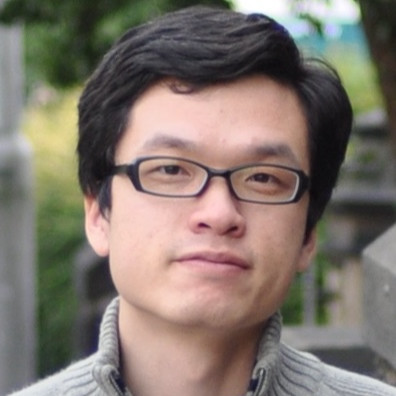
Professor Dr. Chunning Ji
School of Civil Engineering
Tianjin University, China
Bio: Prof. Dr. Chunning Ji, is a full professor of computational fluid dynamics, Tianjin University, China. He was awarded a PhD degree in Port, Coastal and Offshore Engineering by Tianjin University in 2006. He worked as a Marie Curie Fellow in Queen Mary, University of London, United Kingdom, from 2009 to 2011. After that, he worked as a visiting professor in University of Michigan from 2015 to 2016.
He has a broad research interests, e.g., computational fluid dynamics, fluid-structure interaction, multi-phase flow, sediment transport in an open channel, vortex-induced vibration of marine risers, marine current energy harnessing, computational bio-fluids, etc. On these subjects, he has produced more than 140 peer-reviewed papers published by international journals and conference proceedings. He was awarded the best paper prize by the 35th IAHR world congress and the Tianhe Star prize by the Chinese National Super Computing Center.
His research focuses on the sediment transport in turbulent boundary layer and the underlying mesoscopic scale physics by using the cutting-edge direct numerical simulation of turbulent flows. In 2011, this research was evaluated by the UKTC (UK Turbulence Consortium) as ‘pushing the boundary of science’. His research also focuses on the design and optimization of an aquatic clean energy converter (VIVACE) - a new concept to generate clean renewable electricity from river and ocean flow utilizing vortex-induced vibration of cylinder schools. A series of work have been done experimentally and numerically in seeking the optimal designs of VIVACE in cross-flow with high (turbulent flow) and low (laminar flow) Reynolds number. Three related patents have been awarded. He also investigated the stability of marine structures, such as the vortex-induced vibrations of marine risers, the local scouring around piles, pipelines and etc.
Speech Title: Transitions in vibration mode and wake structure of a near-wall flexible cylinder at various yaw angles
Abstract:The multi-mode transition and vortex structures in the VIV of a near-wall flexible cylinder under different yaw angles are investigated through three-dimensional direct numerical simulation. Yaw angles α = 0°-60°, gap ratio G/D = 0.8, and Re = 500 are adopted. With the increase of α, the dominated vibration mode decreases from the 6th to 1st mode in the in-line (IL) direction and the 3rd to 2nd mode in the cross-flow (CF) direction. For the IL vibration, no mode transition occurs at α = 0°, whereas frequently mode transition is observed at α > 0°, due to the intermittent participation and spanwise competition of different modes, thus showing an intensified traveling-wave characteristic. For the CF vibration, mode transition is not excited at any α case even with spanwise mode competitions, due to the significant weight of the dominated mode, thus showing a strong standing-wave characteristic. The asymmetrical distributions of vibration displacements and force coefficients are established because of irregular energy transfer along the span. The spanwise vortex tubes at α = 0°-30° are separated into several cells associated with the dominated vibration mode, showing a locally parallel vortex shedding. However, positively-yawed and negatively-yawed vortex shedding are observed at α = 45° and 60°, respectively. The vortex strengths vary along the cylinder, where large-scale and small-scale vortices are observed at the CF anti-node and node planes, respectively. The Independence Principle (IP) is only valid at α < 15° for predicting the multi-mode vibrations and hydrodynamics, significantly reduced than that of α < 45° in the wall-free case or the mono-mode VIV case.
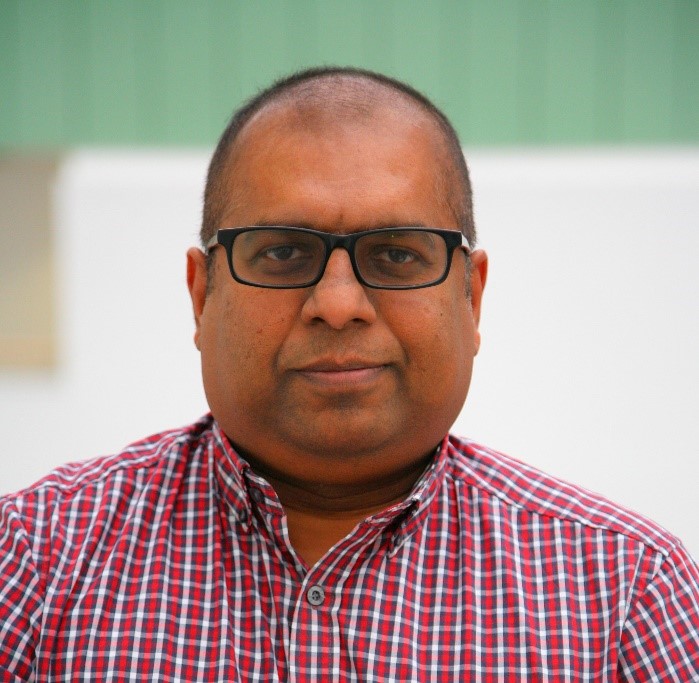
Prof. Dr. Mamdud Hossain
Future Energy Technology
School of Engineering
Robert Gordon
University
Aberdeen, AB10 7GJ, UK
Bio: Mamdud Hossain, SFHEA, CEng, FIMechE is a Professor of Future Energy Technology at Robert Gordon University, Aberdeen, UK. His research interests include applying advanced computational modelling techniques to problems related to hydrogen fuel cell and electrolyser, wind and wave energy, and oil and gas. He has secured funding to explore complex flows relevant to wind, wave and hydrogen from EPSRC, Oil and Gas Technology Centre (OGIC), net Zero Technology Centre (NZTC), Scottish Funding Council, Innovate UK, the Carnegie Trust and industries. He has supervised 15 PhD students to completion. He has published 32 journal articles, 36 conference articles, 5 book chapters and given 11 invited keynote lectures. He is a Science Board member of EPSRC Hydrogen and Fuel Cell Supergen Hub, a member of EPSRC Reviewer College and an Academic Adviser to the Commonwealth Scholarship Commission. He is also an adjunct professor at Vellore Institute of Technology, Chennai. India.
Speech Title: Scalable metamaterial thermally sprayed catalyst coatings for nuclear reactor high temperature solid oxide steam electrolysis
Abstract:The UK government in their 2021 Hydrogen Strategy recognises that the low
carbon hydrogen plays a critical role in achieving transition to net zero and sets
a target of 5GW of low carbon hydrogen production capacity by 2030 for use
across the economy. Unfortunately, pure hydrogen cannot be found in nature
and it has to be produced. Currently, the most common hydrogen production
method is the steam methane reformation, where methane gas is reacted with
steam to produce hydrogen. This process is very carbon incentive, but can be
made low carbon with the carbon capture and storage, which does not exist yet.
A better alternative is to use renewables electricity such as from solar, wind,
nuclear to split water into hydrogen in an electrolyser achieving zero carbon
hydrogen. Since there is virtually no zero-carbon hydrogen production plant in
the UK, it will require a significant and rapid scale up of activities in research and
commercialisation.
There are eight electrolysers at different stages of development and among
those, solid oxide electrolyser technology has many attractive advantages to
scale up to industrial scale. Its high temperature operation is suitable for
utilising waste heat from industry. Moreover, excess stream generated in nuclear
power plant can be easily utilised for producing hydrogen using solid oxide
electrolyser. This talk will explore in detail the design of a solid oxide electrolyser
including the use of different materials, how the design of each components
affects the performance of an electrolyser and how optimising each component
and operating parameters will improve performance. Finally, this talk will give a
summary of our recently funded Energy and Physical Science Research Council
(EPSRC) project on scalable metamaterial thermally sprayed catalyst coatings in
improving solid oxide electrolyser performance. The talk will explain how
metamaterial can be optimised through CFD modelling and experimentation,
how it can improve flows inside an electrolyser and how it offers increased
current density using similar size of an electrolyser.
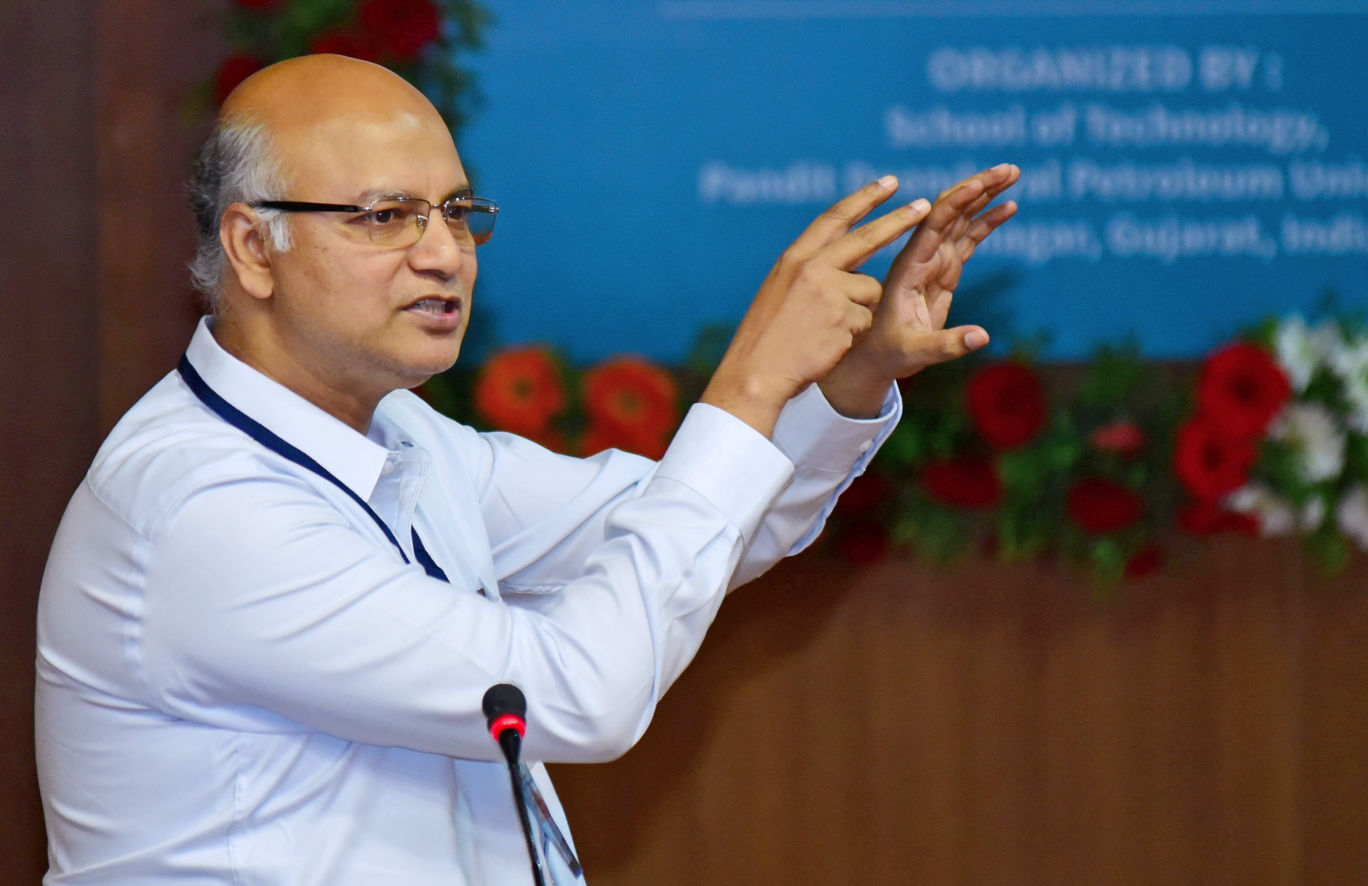
Prof. Santanu Bandyopadhyay
Praj Industries Chair Professor
Sustainability and Process Integration (SPrInt) Laboratory
Department of Energy Science and Engineering
Indian Institute of Technology, Bombay
Bio: Santanu Bandyopadhyay is currently Praj Industries Chair Professor, Department of Energy Science and Engineering, at the Indian Institute of Technology Bombay (IIT Bombay). He obtained his B.Tech. (Hons.) in Energy Engineering from IIT Kharagpur, and M.Tech. and Ph.D. in Energy Systems Engineering from IIT Bombay. His research interest includes Process integration, Pinch Analysis, Industrial energy conservation, Modelling and simulation of energy systems, Design and optimization of renewable energy systems, sustainability, industrial decarbonization, etc. Prior to joining IIT Bombay, he worked for M/s Engineers India Limited, New Delhi. He is currently one of the Editors-in-Chief for Process Integration and Optimization for Sustainability (Springer Nature) as well as Associate Editors for Journal of Cleaner Production (Elsevier), Clean Technologies and Environmental Policy (Springer Nature), and South African Journal of Chemical Engineering (Elsevier). He is a fellow of the Indian National Association of Engineering (INAE).
Speech Title: Industrial decarbonization for sustainability
Abstract: One of the essential prerequisites for sustainable development and reducing the effects of climate change and global warming is decarbonizing the energy sector. The word “decarbonization” literally means the reduction of carbon dioxide emissions. Decarbonization is converting to an economic system to reduce and compensate for carbon dioxide (CO₂) emissions and other greenhouse gases. The long-term goal is to create a CO₂-free global economy. The industrial sector, in general, contributes significantly to the emission of atmospheric greenhouse gases. Industrial decarbonization represents the phasing out of carbon dioxide emissions from all aspects of industry without compromising competitiveness and prosperity. In this talk, different issues related to industrial decarbonization will be discussed, and some examples from developing countries will be presented.
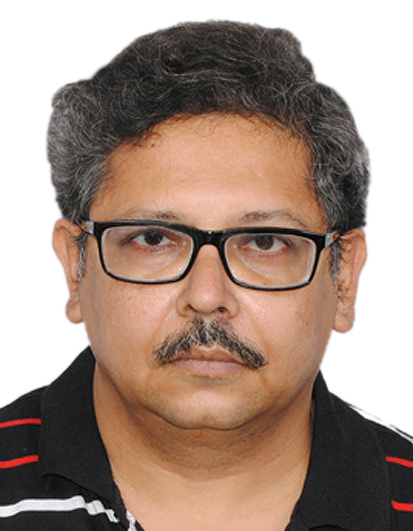
Prof. Himadri Chattopadhyay
Department of Mechanical Engineering
Jadhavpur University, India
Bio: Dr. Himadri Chattopadhyay is a Professor of Mechanical Engineering of Jadavpur University. He has served CSIR-Central Mechanical Engineering Research Institute, Durgaur as Scientist before joining the current faculty position. Professor Chattopadhyay was the Director of School of Bioscience and Engineering of Jadavpur University for two years. He has more than 300 papers in journals and conferences and edited four proceedings. He has about 4100 citations with an H-index of 37. The research area of Prof. Chattopadhyay covers thermo-fluid science, CFD, turbulence, heat transfer augmentation, jet impingement, bio-engineering, materials processing and energy. Diverse nature of the research work is reflected in several reviews which includes stat-of-art on enhancement using vortex generators (Heat Transfer Engineering, 2012), biological thermodynamics (ASME J. Biomechanical Engineering, 2021), aluminum metal matrix composites (J Manufacturing Processes, 2020) graphene based composites (Materials and manufacturing processes, 2021), wind energy harvesting (Sustainable Energy Technologies and Assessments, 2022), development of SiC based materials for white LED (J. American Ceramic Society, 2022) and application of lattice Boltzmann methods is melting and solidification (Computational Materials Science, 2022). Prof. Chattopadhyay is a recipient of DAAD fellowship and DAAD Re-invitation Fellowship. He is a fellow of West Bengal Academy of Science and Technology and Institution of Engineers, India and member of several academic bodies which includes ASME and Indian Science Congress. His name has featured in the list of World's top 2% Researchers since 2021 when the database was first published by Stanford University.
Speech Title: Application of Lattice Boltzmann Method for Phase-change Problems
Abstract: Lattice Boltzmann method (LBM), a mesoscopic approach for numerical simulation of flow and thermal fields is increasingly being applied to solve multiphase problems. The linear nature of LBM equations and ease of computer implementation with parallelization are the factors for popularity of this method. The first part of the present talk briefly discusses the LBM framework. Issues on distribution function, relaxation time and source terms are discussed, Subsequently, multiphase flow analysis for solid-liquid and liquid- gas are discussed. Effectiveness of LBM is showcased through case studies on solidification, melting and evaporation problems.
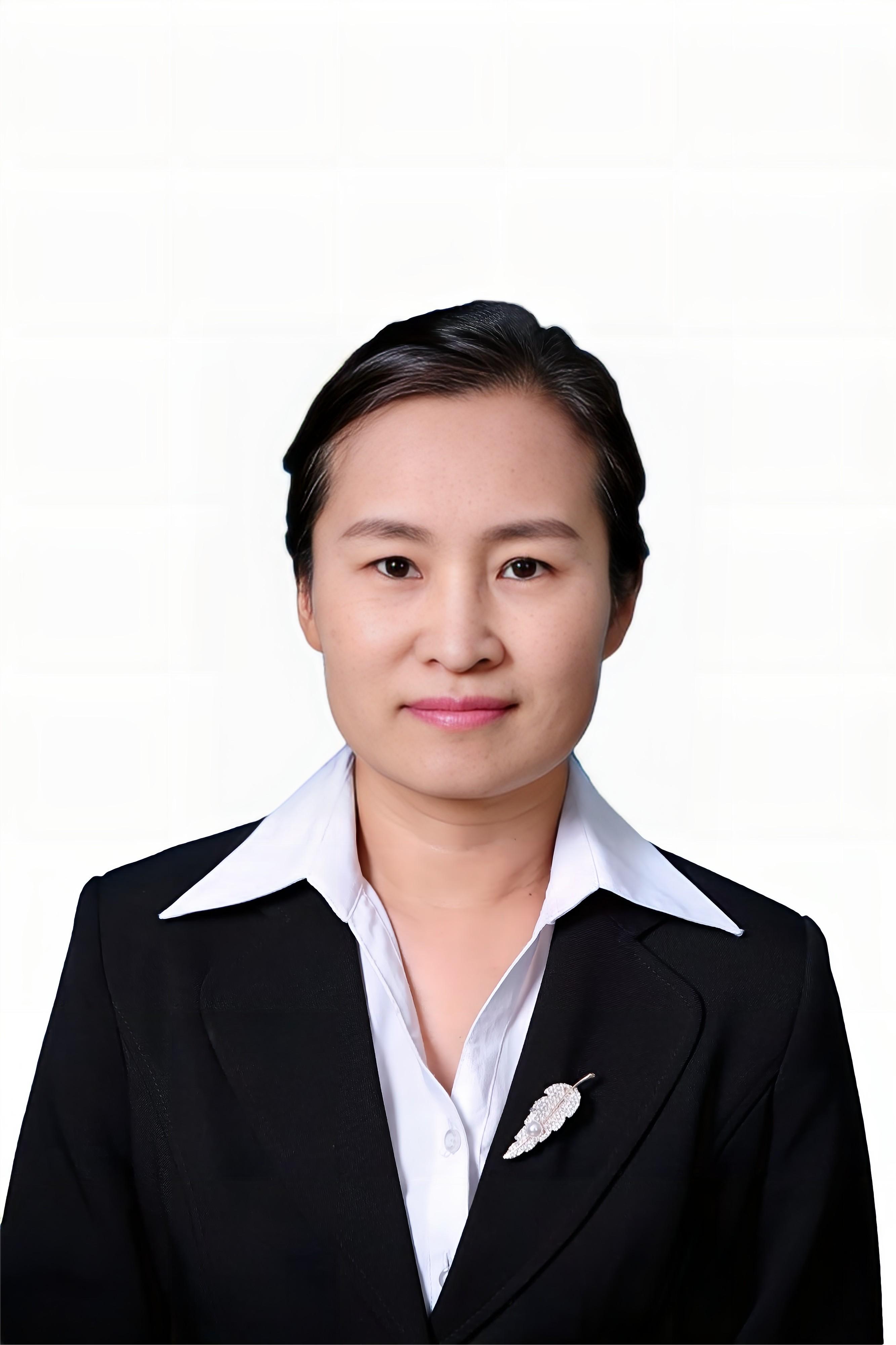
Professor Dr. Yingai Jin
Jilin University, Changchun, China
Bio: My name is Yingai Jin. I am a Professor in College of Automotive Engineering, Jilin University, China. I obtained my B.Tech in Dalian University of Technology in 1989, and M.Tech in 1996 and Ph.D in 2009 from Jilin University. I worked at Jilin Chemical Industry Corporation since 1989 to 1993 and joined Jilin University in 1996. I was a senior visiting scholar at University of Waterloo (Canada) in 2018. My research covers widely ranged areas of energy utilization. I received the First Prize of National Teaching Achievement by the National Education Ministry in 2001 and over 10 provincial Teaching Achievement Awards. I have carried out a UK-China Industry Partnership Programme (Newton Fund) from Royal Academy of Engineering (UK) and other National projects and enterprise cooperation projects. I have 95 publications (including journal articles and peer reviewed conference papers) and 16 patents.
Speech Title: Experimental analysis of hybrid refrigerators including thermoelectric and vapor compression refrigeration systems
Abstract: Vapor compression refrigeration (VCR) has refrigeration-good coefficient of performance, but thermoelectric cooler (TEC) is more in line with the demand for environmental protection and can achieve good inside temperature control. We proposed a refrigeration system with two compartment refrigerators (TEC compartment and VCR compartment). Based on the different positions of the TEC compartments arrangement. Two different configurations of refrigerators are designed to achieve the same refrigeration temperature (TEC reaches 0℃ and VCR reaches -20℃), and the results show that configuration II reduces the power consumption by nearly 68%
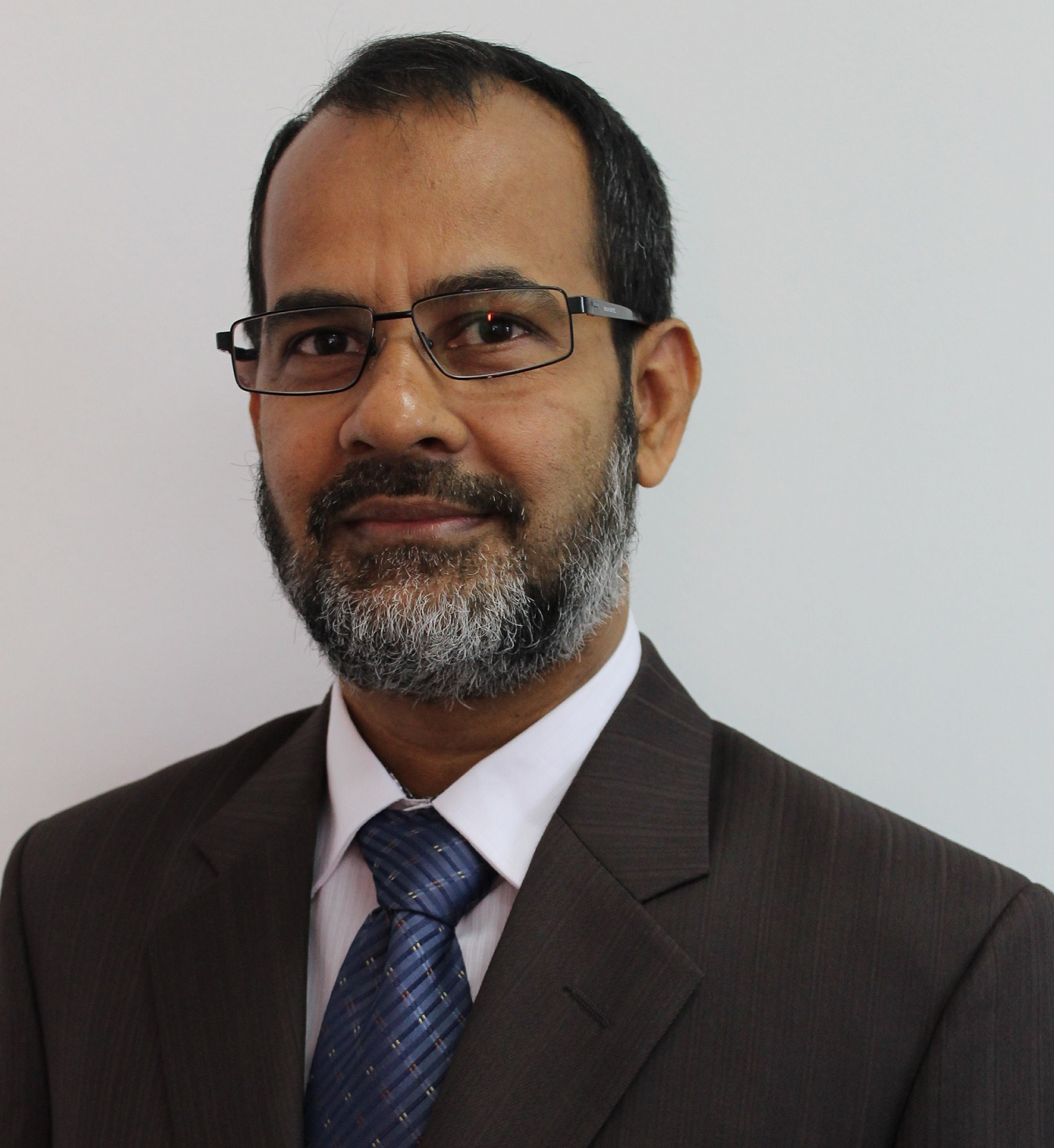
Professor Dr. Mohammad Yeakub Ali
Mechanical Engineering Programme Area
Faculty of Engineering, Universiti Teknologi Brunei
Brunei Darussalam
Bio: Mohammad Yeakub Ali is a Professor in Mechanical Engineering Programme Area at Universiti Teknologi Brunei. Dr. Ali was a Professor in the Department of Manufacturing and Materials Engineering at International Islamic University Malaysia (IIUM) where he works for 15 years. In addition to teaching and research, he also served as head of the department, Deputy Dean (Postgraduate) and other responsibilities at IIUM. He earned B.S. in Mechanical Engineering from Bangladesh University of Engineering and Technology, Dhaka, Masters in Manufacturing Systems Engineering from Asian Institute of Technology, Thailand, and PhD. in Mechanical Engineering from Nanyang Technological University, Singapore. He has published more than 250 articles in journal and conference proceedings. His research interests include manufacturing systems, optimization, scheduling, machining and micromachining. He has supervised many postgraduate students at Masters and PhD level. Dr. Ali has contributed to biannual Brunei International Conference on Engineering and Technology 2021 as a Technical Chair. He is a Chartered Engineer with the Engineering Council UK, a Chartered Professional Engineer with Engineers Australia, a Professional Engineer with the Board of Engineers Malaysia and a Professional Engineer with Bangladesh Professional Engineers Registration Board as well as the member of many professional societies including ASME, IEOM, and IEM.
Speech Title: Effective Teaching of Mechanical Engineering Design: Application of Lean Concept
Abstract: Mechanical engineering design has at least three features which distinguish it from many other teaching areas in the same discipline. Firstly, the majority of students have little or no background in engineering design, secondly, design learning is based on conceptual understanding (backward thinking), and thirdly lecturers are not much interested to teach mechanical engineering design due to complexity and no complete textbook. The main objective of teaching engineering design is to provide a clear understanding of machine design concepts with critical thinking. In addition, mechanical engineering design should train engineering students towards sustainability. As a result, the assessments of students’ performance become more difficult than teaching. The authors argued that application of lean manufacturing principle (The Toyota Way) can identify and then eliminate the wastes to make the teaching of mechanical engineering design appropriate and attractive to students and lecturers. The paper presents the findings based on students’ perception, feedback and assessment for 2015-2020 cohorts of students enrolled in a mechanical engineering design course at International Islamic University Malaysia. The main outcome of this research is to teach just sufficient and develop critical thinking.
Copyright © ME Faculty, RUET. All rights researved.
Developed & Maintained by: Md. Mehedi Hasan